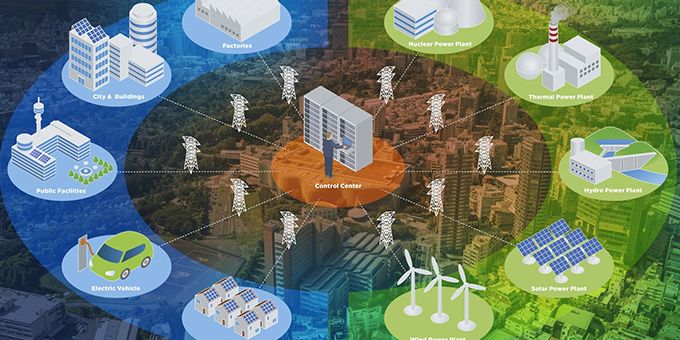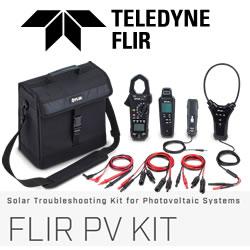The higher demands for long-range connectivity and low power requirements for many IoT and machine-to-machine (M2M) applications are ushering in Wi-Fi HaLow at an increasingly faster rate this year and for the years ahead.
 Building Sustainable and Smart Energy Infrastructures with Wi-Fi HaLow Technology
Building Sustainable and Smart Energy Infrastructures with Wi-Fi HaLow Technology

Kevin Daly, Vice President of Sales | Morse Micro
Clean. Green. Renewable. Sustainable. No matter how innovative energy companies label themselves, they likely share an ultimate goal of reducing the reliance on hydrocarbon sources and eliminating harmful emissions and pollution from the process of creating, distributing and consuming energy. At each stage, there are opportunities to increase efficiency by using advanced communications systems.
One of those advanced communications systems is Wi-Fi HaLow.
Wi-Fi HaLow technology, as named by the W-Fi Alliance, was standardized by the IEEE 802.11ah task group. With Wi-Fi HaLow, the combined effects of using lower frequencies and narrower band channels than conventional Wi-Fi, are connections that reach much farther while using less total energy. Devices can communicate with an access point (AP) up to 1 kilometer away, depending on the country’s regulations on radio systems. For some clean energy systems which span several square kilometers, Wi-Fi HaLow can connect more than 8,000 devices to a single AP.
Table 1: Comparing Wi-Fi HaLow to Conventional Wi-Fi
While conventional Wi-Fi is the most ubiquitous wireless communications protocol in use today, the rapid growth of the IoT has forced a rethinking of Wi-Fi, revealed technological gaps and what role it needs to play in an all-encompassing connected and green world. The higher demands for long-range connectivity and low power requirements for many IoT and machine-to-machine (M2M) applications are ushering in Wi-Fi HaLow at an increasingly faster rate this year and for the years ahead.
The impact of Wi-Fi HaLow can be felt from everything from home and building automation systems, to clean energy systems including, solar, wind, energy storage, and geothermal systems.
Improving the Efficiency of Existing Systems
The existing infrastructures of energy creation, transmission, storage, distribution and consumption can all benefit from immediate improvements in efficiency. Aggregating small improvements across large numbers of consumption devices can result in a major impact on demand. Studying the patterns of consumption can lead to better predictions of how to control the grid and power generation plants. Wi-Fi HaLow simplifies the process of connecting more devices across much greater distances so that intelligent systems can make use of the finer granularity of knowledge and control.
.png)
Home Automation
Heating, ventilation and air conditioning (HVAC) systems are among the largest consumers of energy in the home. When wireless connectivity is added to a programmable thermostat, the homeowner can adjust settings remotely via cloud applications over the Internet. However, not all homeowners program their systems in efficient ways. Smart thermostats improve efficiency by adjusting settings based on patterns of actual system usage, and they account for occupancy in the home. These systems would also be improved by incorporating knowledge at a higher level within an ecosystem that might be aware of the homeowner’s location and schedule.
Traditional Wi-Fi might require buying repeaters or meshes to connect a smart thermostat to the router, adding cost and energy consumption. The low power Wi-Fi HaLow thermostat can reach the home’s Wi-Fi router more easily, simplifying installation costs, and potentially allowing for battery-operated thermostats without any power wires. The individual components in the HVAC system such as air handlers, furnaces, heat pumps, AC compressors and sensor devices in different parts of the home, can be interconnected over Wi-Fi HaLow instead of via wired cable. Each component can become an untethered modular piece of the HVAC system, where each can be incorporated into the usage analysis, and each could be independently upgraded as more efficient technologies emerge.
Additionally, new types of Wi-Fi HaLow sensors such as room occupancy, angle of the sun, humidity and air pollution can provide a larger picture for the HVAC system to provide an intelligent response. Their placement can be chosen by where they provide the best information, instead of being limited to non-optimal placement due to Wi-Fi’s limited coverage. These passive systems require very little energy, yet can greatly reduce the demands on the HVAC system if they can be reliably connected over a Wi-Fi HaLow network at much further distances away from the AP.
Building Automation Systems (BAS)
Wi-Fi HaLow can also improve the efficiency and cost of ownership of a commercial building’s HVAC system. Consider the example of cooling the air for a large office building. This entire network of compressors, sensors, thermostats and damper controllers can be networked together to provide a high-level view of the building’s performance to building management system (BMS) monitors on site, or in the cloud. The traditional method for building this network relies on installing wired power and signal connections to most of these components. Some systems incorporate short-reach wireless mesh networks, including 802.15.4 Zigbee or proprietary radios for sensor devices. Several stages of proprietary hubs or gateways add delays, latency and data throughput restrictions on the path from these devices to reach the BMS on the Internet.
Wi-Fi HaLow integrated circuits provide unique advantages over these wired and proprietary wireless technologies. Because Wi-Fi HaLow operates in the sub-1 GHz frequency range using narrow bandwidth channels which can penetrate walls, ceilings, floors and objects much easier than wired or 2.4 GHz wireless technologies, devices can be placed where they are needed, with fewer restrictions. This eliminates multiple stages of mesh connections and repeaters, reducing the infrastructure costs and the number of devices consuming energy.
Smart Metering and Smart Grid
A utility meter using Wi-Fi HaLow can reach further than 1 km (per FCC regulations). This simplifies the utility’s network in that it can use a star-oriented architecture. A single AP in a neighborhood could monitor thousands of homes. Wi-Fi HaLow also increases the security of the data transferred to and from each home by adopting Wi-Fi’s WPA3 levels of encryption. The Wi-Fi HaLow utility meter can negotiate sleep times with the AP to save power when communications are not required. Competing solutions based on Zigbee radio technology (whether 2.4 GHz or sub-1 GHz IEEE 802.15.4g Wi-SUN) rely on meshes of devices to relay the information back to a neighborhood’s utility gateway to get access to the IP network. As discussed earlier, such meshes incur delays and reduce the network’s total throughput for all the other nodes in the mesh.
The distribution infrastructure that delivers electricity to homes and businesses can also benefit from using Wi-Fi HaLow connectivity. Supervisory Control and Data Acquisition (SCADA) systems rely on sensors to understand what is happening in the entire network in order to make decisions on how to manage the power grid. The conditions measured at the substations are often used to infer what has caused a fault on the downstream lines which feed neighborhood transformers. By installing more sensors and providing more data with a finer granularity of the conditions in the secondary networks, including what is being experienced at each transformer in a neighborhood, the SCADA system can make better decisions on how to respond. Wi-Fi HaLow’s > 1 km reach and high throughput can be used to aggregate sensor data both within the substations as well as within the neighborhood.
Improving Clean Energy Systems
Solar
The cost per kilowatt of photovoltaic (PV) systems that convert sunlight to electricity has dropped dramatically over the past several decades. A large portion of the drop was due to increased efficiencies of the PV panels, the best of which now hover just below 25 percent. Another portion of the cost decrease was due to new innovations such as microinverters and optimizers that make the best use of energy from each individual panel. Fewer panels are required to produce the average power needed for a typical home than in the past. Monitoring systems that track the status of every individual panel on a building’s roof provide feedback for attaining the peak power for the installation. Some of these components may communicate through the power cables. A single internet connection is typically made via Ethernet, Wi-Fi, or cellular modem at the unit that combines the solar system with the home’s grid connection.
By using wireless communications in every panel, micro-inverter, power optimizer, and grid-tied switch, the entire PV system can be monitored and controlled to the finest granularity without relying on data flowing through the power cable. The ICs can operate at very low voltages and can save energy by sleeping when idle. With a native-IP wireless communications network, every component could be connected to the management system in the cloud. Aging components could be individually upgraded with higher efficiency components in the future, without having to be backward compatible with the wired communications protocols. Interoperability between different component suppliers could encourage innovation and competition which would accelerate the growth of the market for consumers.
Energy Storage
Batteries provide the most obvious choice for storing electric energy for use by small devices and vehicles. By extending the battery life of wireless sensors, Wi-Fi HaLow provides an immediate benefit to the planet by reducing waste of disposable batteries.
Advances in Lithium polymer (LiPo) battery technology revolutionized several industries from smart phones to electric vehicles. The energy for an entire house might be stored in a large LiPo battery hung on a wall. Intelligent battery chargers can store “free” solar energy in the battery, or can charge from the grid during off-peak times. The house battery can give the energy back to the house or appliances when needed during peak times that would otherwise have billed at higher rates. The coordination of all these systems can be assisted with Wi-Fi HaLow in every component.
Electrochemical batteries are not the only way to store energy. Converting electricity into kinetic energy can provide a means to hold renewable clean energy. Excess electricity can be used to spin very large fly wheels which spin on low-friction bearings. The fly wheel’s inertia can be converted back into electricity by engaging a generator when needed. This concept is analogous to hydropower or wind power, albeit in a more compact form factor. Fields of flywheel storage devices can be networked together with Wi-Fi HaLow without relying on wires.
Wind
Within each wind tower is housed a gearbox and generator that converts the rotational wind forces into electricity that runs in cables to the ground. Bearings and gears are monitored for premature wear and vibrations. The direction and pitch of the blades are controlled to ensure consistent delivery of power to the grid. The tower also includes numerous sensors to measure environmental conditions such as wind speed, direction, and formation of ice. A Wi-Fi HaLow network can connect all these functions and enable the placement of new small sensors which might not have been accessible in the past.
Geothermal, Hydropower, Natural Gas, Bioenergy
Wi-Fi HaLow is an attractive wireless communications solution for these clean power industries due to its ability to connect sensors and actuators across very large volumes. They are similar applications to the industrial automation industry. Wi-Fi HaLow sensors can be placed in locations that are not accessible to data cables. Rivers can be spanned and multiple well heads in a field can be aggregated. The process engineer has greater flexibility to design the optimal system without restrictions imposed by running Ethernet cables or proprietary wired controller solutions.
Wi-Fi HaLow aims to deliver new options to innovators in renewable energy and represents an exciting future of wirelessly connected people and devices across the IoT. For the energy market, that means longer distances, lower power, better penetration through objects, larger numbers of native-IP connections, and more robust security.
The content & opinions in this article are the author’s and do not necessarily represent the views of AltEnergyMag
Comments (1)
Featured Product

